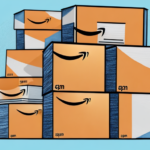The Cost of Selling on Amazon: Comprehensive Guide for 2024
If you're considering selling on Amazon, it's crucial to understand the costs associated with the platform. Amazon offers a variety of services to sellers, but many of them come with fees that can impact your profits. This guide breaks down the most important costs to consider when selling on Amazon and provides actionable tips for reducing your expenses.
1. Overview of Amazon Selling Fees
Referral Fees
Amazon charges referral fees as a percentage of the sale price for each item sold. These fees vary by product category, typically ranging from 6% to 45%. For most categories, the fee is between 8% and 15%. For example, books have a referral fee of 15%, while electronics may have higher fees.
Understanding the referral fee structure is essential for accurate pricing and profit calculation. Refer to Amazon’s official fee schedule for the most up-to-date information.
Variable Closing Fees
In addition to referral fees, Amazon charges a variable closing fee per item sold. This fee is typically $1.80 but can vary based on the item's size and weight. For large or heavy items, the variable closing fee may increase accordingly.
Optional Services and Their Fees
Amazon offers several optional services that can enhance your selling experience but come with additional costs:
- Fulfilled by Amazon (FBA): Allows sellers to store products in Amazon’s warehouses. Fees depend on the product’s size, weight, and storage duration.
- Advertising Services: Includes sponsored product ads and display ads, charged on a cost-per-click basis.
- Professional Selling Plan: Costs $39.99 per month and is recommended for sellers with higher sales volumes.
2. Impact of Amazon Fees on Your Profits
Fee Structures by Product Category
The referral fees vary significantly by category, impacting your profit margins differently. For instance, selling clothing may incur a 17% referral fee, whereas the fee for accessories might be lower. It's essential to factor in these variations when selecting your product categories.
High-Margin vs. Low-Margin Products
For products with low profit margins, Amazon fees can significantly reduce profitability. For example, if you sell a book for $20 with a 15% referral fee, you’ll pay $3 in fees, leaving you with $17. For high-margin items, however, these fees are more manageable and less likely to erode profits.
Additional Fees: Fulfillment, Storage, and Advertising
Beyond referral and closing fees, sellers must account for:
- Fulfillment Fees: Charged for picking, packing, and shipping orders via FBA.
- Storage Fees: Based on the volume your inventory occupies in Amazon’s warehouses.
- Advertising Fees: Costs associated with promoting your products to increase visibility.
Regularly reviewing these fees and adjusting your pricing strategy can help maintain profitability.
3. Comparing Amazon to Other E-commerce Platforms
Fee Comparison
While Amazon’s fees can be higher compared to other e-commerce platforms like eBay or Shopify, the trade-off is access to a vast customer base that can potentially drive higher sales volumes. For example, Shopify typically charges lower transaction fees but requires more effort in driving traffic to your store.
Customer Base and Competition
Amazon’s extensive customer base offers significant sales opportunities, but it also means higher competition. Platforms with lower competition might offer better visibility for new or niche sellers, but they generally have fewer potential customers.
Choosing the Right Platform for Your Business
When selecting a platform, consider your sales goals, product types, and profit margins. If leveraging Amazon's massive audience aligns with your business objectives, the higher fees may be justified. Otherwise, exploring alternative platforms could be more beneficial.
4. Hidden Costs on Amazon
Storage Fees
If your inventory doesn’t sell quickly, storage fees can accumulate. Long-term storage fees apply to items stored in Amazon’s warehouses for over 365 days, which can significantly impact your bottom line.
Shipping and Handling Fees
Using FBA involves paying for shipping and handling, which varies based on the product’s size and weight. Efficient inventory management can help minimize these costs.
Advertising Costs
Promotional activities are necessary to increase product visibility, but they come at a cost. Sponsored product ads, brand ads, and display ads can quickly add up, especially in competitive categories.
Performance Metrics Penalties
Amazon monitors seller performance metrics. Poor performance can lead to higher fees or even account suspension. Maintaining high standards in customer service, order fulfillment, and product quality is crucial to avoid these penalties.
5. Amazon FBA Fees
Storage and Fulfillment Fees
The cost of using FBA depends on the size and weight of your products. Standard-size items incur lower fees compared to oversized items. Additionally, seasonal factors can influence storage fees.
Cost Considerations Based on Product Size and Weight
Larger and heavier products not only cost more to store but also incur higher fulfillment fees. It’s important to optimize your product dimensions and packaging to reduce these costs.
Pros and Cons of FBA
- Pros: Increased visibility with Amazon Prime, reduced shipping workload, and improved customer service.
- Cons: Higher fees, reduced control over inventory, and potential for increased storage costs if products don’t move quickly.
Many sellers find FBA valuable for scaling their businesses, despite the additional costs. Evaluate whether the benefits align with your business needs.
6. Calculating and Reducing Your Amazon Selling Costs
Calculating Your Amazon Selling Costs
To accurately calculate your costs, consider the following:
- Referral Fees: Percentage of the sale price based on category.
- Variable Closing Fees: Typically $1.80 per item.
- FBA Fees: Based on size, weight, and storage duration.
- Advertising Fees: Cost-per-click for sponsored ads.
- Other Fees: Long-term storage, returns processing, and performance penalties.
Utilize Amazon’s fee calculation tools to get precise estimates tailored to your products.
Pricing Strategies
Set competitive prices by factoring in all fees and desired profit margins. Regularly monitor competitor pricing and adjust your strategy to stay competitive without sacrificing profitability.
Negotiating with Suppliers
Reducing your product costs can significantly enhance your profit margins. Negotiate better prices with suppliers by committing to larger order volumes or establishing long-term contracts.
Optimizing Product Listings
Enhance your product listings with high-quality images, detailed descriptions, and relevant keywords. Optimized listings improve visibility and conversion rates, increasing sales without additional advertising costs.
7. Strategies to Reduce Amazon Selling Costs
Focus on High-Margin Products
Prioritize selling products with higher profit margins to withstand the impact of fees. Conduct market research to identify profitable niches with manageable competition.
Use Self-Fulfillment Instead of FBA
For certain products, self-fulfillment can be more cost-effective than using FBA. Analyze your fulfillment capabilities and costs to determine the best approach for your business.
Leverage Amazon’s Built-In Tools and Programs
Amazon offers various tools and programs to help sellers manage costs effectively. Utilize tools like Amazon Seller Central for inventory management and automation features to streamline operations.
Optimize Inventory Management
Efficient inventory management reduces storage fees and minimizes the risk of excess inventory. Implement strategies like just-in-time inventory to keep storage costs low.
Conclusion
Selling on Amazon presents a significant opportunity to reach millions of customers, but it's essential to understand and manage the associated costs. By comprehensively analyzing Amazon's fee structure, comparing it with other platforms, and implementing cost-reduction strategies, you can maximize your profitability. Stay informed about the latest fee changes and continuously optimize your business practices to thrive in Amazon’s competitive marketplace.




















